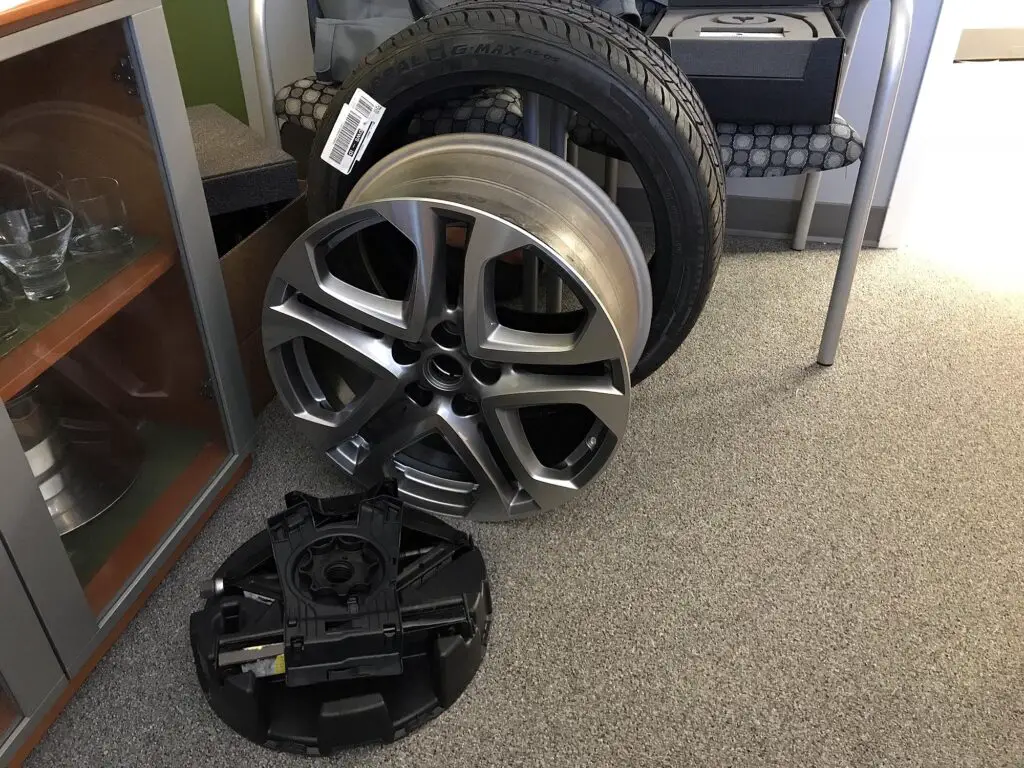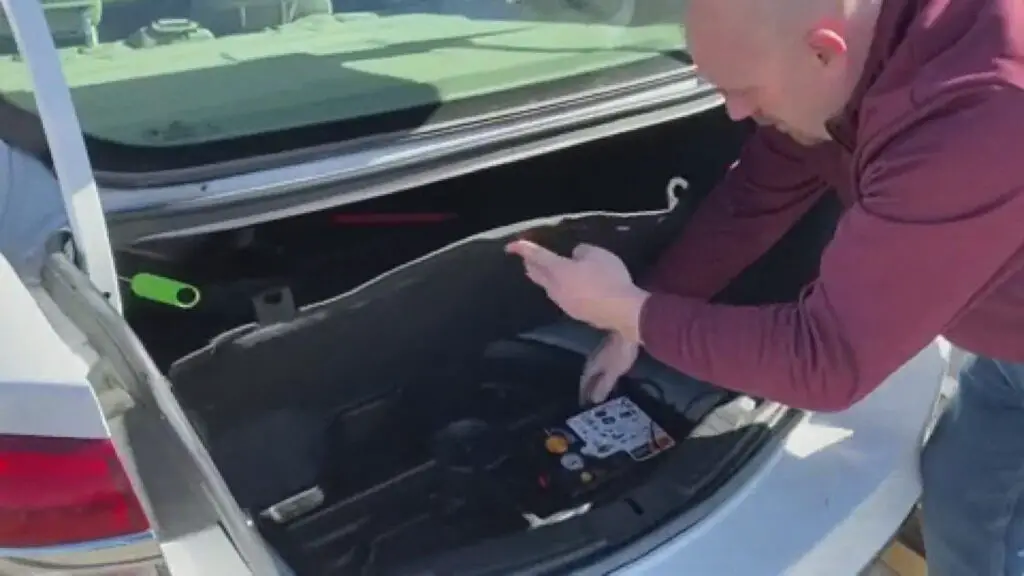“Cars that do not have spare tires often use tire repair kits or run-flat tires instead. These alternatives help reduce weight and maximize space in the vehicle.”
In the world of automobiles, a spare tire has traditionally been an essential component of a car’s emergency kit. However, in recent years, many modern cars have started coming without a spare tire, opting for alternative solutions instead. Whether it’s for reasons related to weight reduction, cost savings, or space optimization, cars that do not have spare tires are becoming more common.
But why are automakers moving away from the traditional spare tire, and what do these vehicles use instead? In this article, we’ll explore why some cars don’t come with spare tires, the alternatives available, and which vehicles are affected by this shift in automotive design.

Contents
Why Do Some Cars Not Have Spare Tires?
More and more cars are being manufactured without a spare tire, which might seem unusual to many drivers. In this article, here are the reasons behind this trend and the alternatives that are now being offered in place of spare tires.
1. Fuel Efficiency and Weight Reduction
The decision to remove the spare tire is largely driven by the need to make cars lighter and more fuel-efficient. A spare tire, along with its tools and the compartment it occupies, can add between 30 and 50 pounds to the overall weight of a vehicle. With car manufacturers constantly striving for better fuel efficiency, removing these extra pounds helps improve the car’s performance and reduce fuel consumption.
Modern cars, particularly compact cars, sedans, and electric vehicles (EVs), benefit from the weight reduction, especially as manufacturers are focusing more on fuel economy and low emissions.
For example, vehicles like the Tesla Model S and Chevrolet Bolt EV benefit from this weight reduction, making them more energy-efficient while still delivering powerful performance. Without the spare tire and associated tools, these cars achieve optimal performance while offering greater range per charge.
2. Cost Savings for Manufacturers
By eliminating spare tires, manufacturers can significantly cut production costs. Not only does removing a spare tire reduce the amount of raw materials used in vehicle assembly, but it also eliminates the need for other components like the tire changing tools, jack, and lug wrench. This cost reduction is especially beneficial for automakers producing budget-friendly vehicles, as they can reallocate those savings toward other parts of the car or even pass them on to the consumer.
3. Space Optimization in Smaller Vehicles
As vehicle designs evolve, maximizing space has become a key priority for automakers, particularly in small cars and electric vehicles. When space is at a premium, every inch counts. Spare tires take up valuable trunk or storage space, reducing the amount of room available for luggage, groceries, or other items. With fewer cars coming with a traditional spare tire, manufacturers can offer more cargo space, improving overall practicality for the vehicle owner.
For instance, the BMW 3 Series and Audi A4 use tire repair kits and run-flat tires instead of a spare tire, which allows these luxury sedans to have more spacious trunks while still providing solutions to flat tires when they occur.
4. Advancements in Tire Technology
New tire technology, such as run-flat tires, has enabled automakers to eliminate the need for a spare tire in certain models. Run-flat tires are designed to allow the driver to continue driving for a limited distance (typically up to 50 miles) after a puncture, eliminating the immediate need for a spare. These tires are capable of maintaining their structure even when deflated, providing a temporary solution until the driver can get the tire repaired or replaced.
In addition to run-flat tires, tire repair kits are becoming more common in cars that don’t come with spare tires. These kits typically include sealants and small compressors that can temporarily fix minor punctures. While they don’t replace the need for a full tire change, these kits offer a quick fix to keep you moving in case of a flat.
5. Changing Consumer Behavior
The rise of roadside assistance services has also contributed to the decrease in the number of cars equipped with spare tires. Services like AAA and other mobile tire repair options allow drivers to call for help when they experience a flat tire. For many drivers, the reassurance of roadside assistance, coupled with tire repair kits and run-flat tires, means they no longer need to worry about carrying a spare tire in their vehicle.
Which Cars Do Not Have Spare Tires?
While many new cars are following this trend, the specific vehicles that lack spare tires vary by make, model, and trim level. Here are some examples of popular vehicles that are often sold without a spare tire:
1. Tesla Model S and Model 3
Tesla has long removed spare tires from its electric vehicles, opting instead for tire repair kits. Since electric cars like the Model S and Model 3 are designed for energy efficiency, eliminating the spare tire helps reduce weight and maximize range per charge.
2. Chevrolet Corvette
The Chevrolet Corvette is another example of a high-performance car that does not come with a spare tire. Instead, it is equipped with run-flat tires that allow the driver to continue driving even after a flat tire, and a tire repair kit is provided as an alternative.
3. BMW 3 Series
Certain trims of the BMW 3 Series come with run-flat tires instead of a spare tire. Run-flat technology ensures that the car can continue to drive a limited distance after a puncture, eliminating the immediate need for a spare.
4. Audi A4
Some variants of the Audi A4 are sold without a spare tire, instead offering a tire repair kit to address minor tire issues. This helps maximize trunk space while still providing a solution for tire emergencies.
5. Honda Civic
Many newer versions of the Honda Civic come without a spare tire. Instead, the vehicle is equipped with a tire repair kit, which includes a tire inflator and sealant to help temporarily fix minor punctures.
6. Nissan Leaf
As an all-electric vehicle, the Nissan Leaf eliminates the spare tire in favor of a tire repair kit, allowing for space optimization and reduced vehicle weight. This is consistent with the focus on energy efficiency in EVs.

Alternatives to Traditional Spare Tires
While spare tires have been a staple in vehicles for decades, many modern cars are now equipped with alternatives. In this section, we’ll explore the most common alternatives to traditional spare tires and how they work to keep you safe on the road.
1. Run-Flat Tires
Run-flat tires are a popular alternative to traditional spare tires, as they allow drivers to continue driving for a limited distance after experiencing a puncture. These tires are commonly found in sports cars, luxury sedans, and some electric vehicles.
2. Tire Repair Kits
Tire repair kits typically include sealants and compressors that can temporarily seal small punctures and reinflate the tire. These kits are a cost-effective and space-saving alternative to carrying a full spare tire.
3. Roadside Assistance Services
For many drivers, the availability of roadside assistance services from companies like AAA or insurance providers offers peace of mind in case of a flat tire. These services can send a technician to fix or replace a flat tire, making the need for a spare tire less urgent.
Frequently Asked Questions
Here are some FAQs about cars that do not have spare tires –
1. Why don’t new cars come with spare tires?
Manufacturers are eliminating spare tires to reduce weight, cut production costs, and optimize space for other features. Instead, many cars come with tire repair kits or run-flat tires.
2. Can I buy a spare tire for my car if it doesn’t come with one?
Yes, if your car doesn’t come with a spare, you can purchase one from your car’s manufacturer or an aftermarket supplier. Make sure the spare is compatible with your vehicle’s specifications.
3. Are run-flat tires a good alternative to spare tires?
Run-flat tires are a great option for drivers who want to avoid the hassle of changing a tire. However, they can be more expensive and offer a firmer ride.
4. Do tire repair kits work on all punctures?
Tire repair kits are effective for small punctures in the tread area but may not work for larger holes or sidewall damage. They offer a temporary fix until you can get a proper repair.
5. Can I still drive if my car doesn’t have a spare tire?
Yes, many modern cars with run-flat tires or repair kits allow you to drive a limited distance after a flat. However, it’s important to get the tire repaired as soon as possible.
Conclusion
Cars that do not have spare tires are becoming increasingly common, as automakers focus on weight reduction, cost savings, and space optimization. While this change may seem concerning at first, alternatives like run-flat tires, tire repair kits, and roadside assistance services offer practical solutions for tire-related issues.
As a car owner, it’s important to know the alternatives and be prepared in case of a flat tire. Whether you choose a car with a spare tire or opt for one without, knowing your options can help you stay safe and confident on the road.